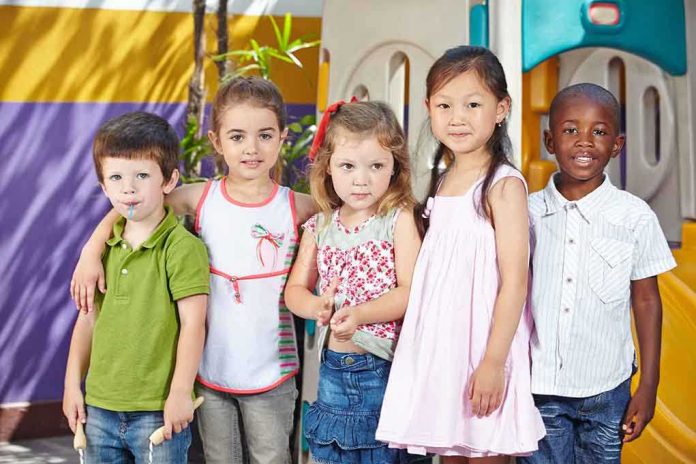
Nearly half of America’s kids now suffer from at least one chronic health condition, and mental health disorders among our youth have skyrocketed — but ask yourself: why is this happening in the so-called most advanced nation on earth?
At a Glance
- JAMA study finds 45.7% of US children now suffer from chronic health problems — up from 39.9% in 2011.
- Anxiety and depression among kids have spiked dramatically, especially since the COVID-19 lockdowns.
- Experts blame school closures, social media, and government negligence for fueling a youth mental health crisis.
- America faces a critical shortage of pediatric mental health professionals, leaving families in the lurch.
A Nation’s Children: Sicker, Sadder, and More Overlooked Than Ever
For a country that never misses a chance to virtue-signal about “the children,” it’s incredible how little has actually been done to protect their real, basic health. A bombshell study published in JAMA reveals almost half of American kids deal with at least one chronic health condition. And before anyone tries to brush this off as just “more awareness,” the numbers don’t lie: 39.9% in 2011, 45.7% in 2023. That’s not a blip — that’s an epidemic. The mental health breakdown is especially jaw-dropping: anxiety rates among children shot from 7.1% in 2016 to 10.6% in 2022. Depression in kids jumped from 3.2% to 4.6%. Among high schoolers, reports of feeling sad or hopeless soared from 26.1% in 2009 to nearly 40% in 2023. And let’s not forget the surge in loneliness, obesity, and sleep problems. The American Academy of Pediatrics and the US Surgeon General both issued public health emergencies about this youth mental health crisis. But while bureaucrats draft “calls to action,” regular families are drowning in the consequences.
We’re told to trust the experts, yet those same experts locked down schools, shut down playgrounds, and forced children onto screens for years. The result? Young Americans more anxious, more depressed, and more isolated than ever. And now, the mental health system is so overloaded that finding a child psychiatrist is like winning the lottery. But, hey, at least we have more TikTok safety guidelines, right?
How Did We Get Here? Years of Neglect and Policy Disasters
Let’s trace the roots. Before COVID-19, American children were already up against rising mental health issues. The usual suspects were there: relentless academic pressure, the omnipresence of social media, and the breakdown of family and community support. But the COVID-19 pandemic was the accelerant on an already out-of-control fire. Lockdowns and school closures, cheered on by self-proclaimed “protectors of the vulnerable,” isolated millions of kids. Pediatricians warned that the longer the closures, the greater the risk of depression and anxiety — but those voices were drowned out by the political class and their media mouthpieces, who insisted that “following the science” meant locking down the healthy right alongside the sick. Even now, years after schools have reopened, the damage is clear: chronic absenteeism, plummeting academic performance, and mental health waiting lists that stretch for months. The National Survey of Children’s Health tracks these trends; the message is consistent: the kids aren’t alright, and the adults in charge look the other way.
The government response? More bureaucracy. The CDC and NIH type up advisories and fund new “initiatives” while families navigate a system so backlogged that emergency rooms have become the default mental health providers for desperate kids. There’s no shortage of advocacy groups and advisory panels, but when it comes to real action — like fixing the shortage of child mental health professionals or restoring the normalcy that kids desperately need — it’s all talk, no results. The only thing that’s increased faster than diagnoses is the red tape.
Who Pays the Price? Families and Taxpayers, Not Bureaucrats or Elites
The fallout lands hardest on the families. Parents watch their kids struggle, often with little real help. Schools, forced to act as mental health clinics on top of everything else, are overwhelmed and underfunded. The financial burden is staggering: annual costs of youth mental health disorders in the US are estimated at $247 billion. Meanwhile, politicians debate whether the root problem is social media, screen time, or the “climate crisis.” Here’s a thought: maybe it’s the decades of government overreach, family breakdown, and the insane idea that locking down a nation’s children was ever a good idea. Minority and low-income families, as always, bear the brunt. The shortage of pediatric mental health professionals is most acute where families need them most. And let’s not forget: while taxpayer dollars flow to every trendy program under the sun, America’s own kids are left to languish on waiting lists and in overcrowded ERs. If this is “progress,” it’s the sort that only a bureaucrat could love.
But don’t expect the so-called experts to admit any fault. They’ll hold another summit, launch a new campaign, and blame “misinformation” for the crisis — anything to avoid owning up to the consequences of their own disastrous policies. American families deserve better. Our kids deserve better. And until common sense and real accountability return to the halls of power, expect the crisis to march on.
Sources:
Youth Anxiety and Depression Increasing, Study Finds
Association of Adolescent Depression Trajectories With Adult Mental Health and Social Outcomes
Changes in US Adolescent Mental Health Symptoms During the COVID-19 Pandemic
Prevalence and Trends in Mental Health Disorders Among US Children










